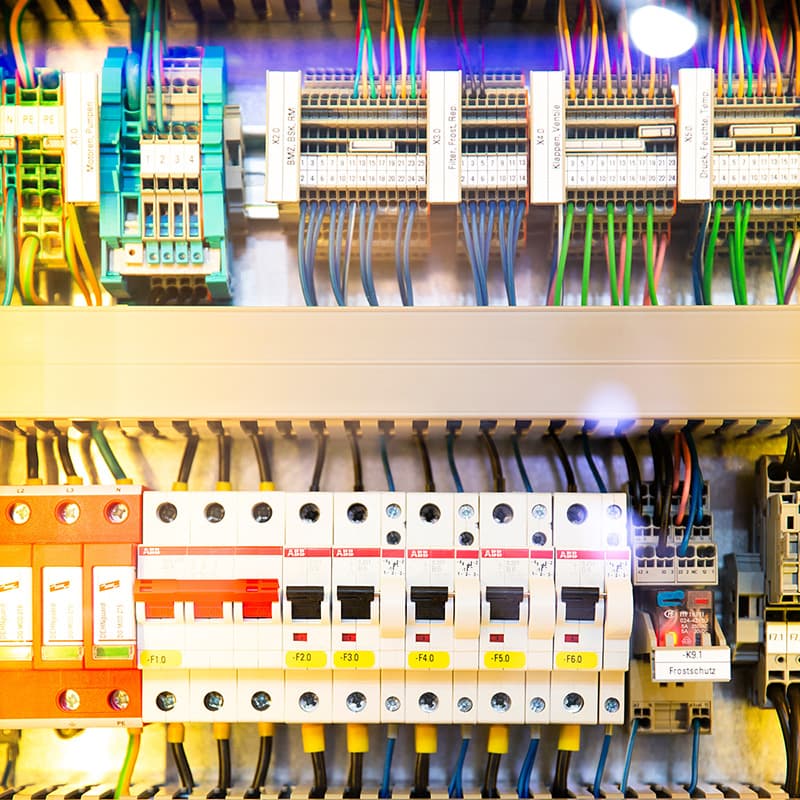
The Components of a Solar Power System
The Components of a Solar Power System https://activeenergygroup.com.au/wp-content/uploads/electrical-installation-2.jpg 800 800 Active Energy Group https://activeenergygroup.com.au/wp-content/uploads/electrical-installation-2.jpgThe Components of a Solar Power System
We explore the key elements of a solar system. While this is a short list, and there are many more crucial components, we’ve covered some of the most asked-about and most notable.
It can feel overwhelming when it comes to making selections on solar systems, as there is a lot to consider, and many brands producing various qualities of components. The team at Active Energy Group are highly trained and have a wealth of knowledge on key solar components. Speak with us today to understand what you need, and begin building a system that suits you and your household or business.
Power Inverter
The inverter is a crucial component of any solar power system. Without the inverter, the power generated by the solar panels cannot be used. An inverter allows solar power to be converted from DC, which is what the panels produce while collecting sunlight, into AC, which is what powers most homes and businesses across Australia.
Without an inverter, you’re going to be generating plenty of solar energy that you can store (if you have a battery system), but can’t actually use. For this reason, the inverter is considered one of the key components in any system, even being referred to as the ‘gateway’ of the solar system, so to speak.
Our team will have choices of inverters for you, all of which we are well acquainted with, and come highly recommended.
Solar Panels
Likely the most ‘famous’ component of a solar electric system, solar panels comes in a range of sizes, power outputs and even shapes. Typically, they’re made with a glass front, polymer backing, aluminium, and use silicon crystal cells (photovoltaic cells) to generate electricity.
In most cases, solar panels are installed on the rooftops of homes and are what does the work of turning sunlight into (almost) usable power. Different panels produce different amounts of power; they get given ratings, which is based on how efficient they are under ‘perfect circumstances’, and is essentially based how much power they can output. It can vary massively, from as little as 10 Watts, right up to 300 Watts per panels and beyond.
A typical Australian household usually requires between 20-28 panels for an efficient and worthwhile system. Smaller systems will still work great, but may not produce enough power for larger appliances.
Contact us for a free consultation
Breaker Box
While not exclusive to solar power, breaker box (or panel box), is an important part of your solar system. All the power your solar system is producing will be running through this panel before being used by your home or business.
The amperage of your main breaker switch inside this panel box is important to note, and will essentially dictate the system you can have installed. A typical breaker box would usually be somewhere between 100 and 225 amps; most are either 100 or 200 amps.
Generally speaking, a 100 amp panel box will allow for a 4.25kW system – a smaller, but still capably-sized setup. A 200 amp panel box can support a system size up to around 12 kW, which will give a much higher electricity output, and will cut your power bills noticeably and instantly.
Solar Battery
At night, or if the sky is overcast with thick cloud, solar power cannot be produced – which means it cannot be used. In locations where thick cloud is common, batteries are added to solar power systems so that when no power can be produced, there is still electricity available for the house.
Batteries are an expensive addition to a solar system, but are essential if you want to go ‘off-grid’ or be entirely reliant upon solar energy to power your home. Here in Australia, we’re blessed with plenty of sun year round, making batteries less commonly used – certainly in a standard setup.
Charge Controller
Also known as a charge regulator, the charge controller prevents batteries from becoming overcharged. When a battery becomes overcharged it can damage the energy storage system, so when a charge controller detects a battery is full it diverts power elsewhere. This technology is seen through countless consumer electronics – mobile phones, laptops – and is essential is maintaining the lifespan of your solar battery.
With the battery being much bigger than any ‘standard’ battery, anything going wrong poses more danger and potential costs, which is why battery safety technology in solar batteries is at an all time high.
Contact Us
Contact us today to get a free consultation and find out how much
you could save on your power bill!
Phone : 0456 800 232




